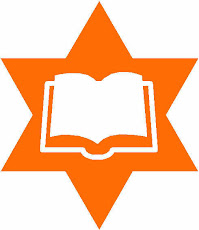With a colleague, I’ve been facilitating/teaching a group of 15 for-the-most-part beginning religious school teachers.
We’ve met five times since the September, for slightly less than two hours each time. We’re a diverse group – some younger, some older; some still in college, many working first jobs; some Israeli, some Americans; some working with early childhood students, some with older students.
My colleague and I have tried to expose them to a variety of topics. We’ve tried to make our sessions interactive, modeling our belief that all teachers need to teach to a variety of learning styles. (Sometimes we've been more successful than others!) The topics we’ve touched on include the following:
- Jewish identification
- Challenges and Opportunities in Supplemental Education
- Jewish Values Guiding Our Teaching
- Multiple Intelligences
- Big Ideas/Goals/Objectives/Learning Activities
- Working in Small Groups
- Auditory/Visual/Kinesthetic Learning Styles
- Gender Bias
- Centers and Center-Type Activities
- Graphic Organizers
- Cooperative Learning Techniques
- Strategies to Build Energy in the Classroom
- Classroom Management “On One Foot”
All of which have been undergirded by reflective practice – what worked and why? What didn’t work and why not? What should we change next time?
This past week, participants in the course began to “present” – sharing a 20 minute lesson they’d taught recently. The assignment outline asked
- how the lesson fit with the “Big Idea” for their class this year;
- strategies they used;
- complications they encountered;
- evidence of learning – how they knew the students learned what they taught;
- their assessment of the lesson; and
- what they would change next time.
In a little more than an hour, seven participants shared their lessons with the rest of the group. My colleague and I kept our comments to a minimum and invited the rest of the group to ask questions of the presenters and comment on what they had heard.
Later that week – we kvelled.
What we heard were participants who demonstrated their clear understanding of key concepts: big idea, goals, different learning strategies, assessment of student learning, and assessment of their own experience.
What we heard were colleagues who were supportive and encouraging – not afraid to compliment or to question.
What we heard were participants who are so student-focused already that they were able to adapt the plan to fit unanticipated changes.
What we heard were colleagues who are able to show how their teaching builds on the teaching done by another participant.
What we saw were participants whose eyes lit up as they talked about key values and their students.
What we saw were eyes seeking out colleagues when participants were urged to “identify someone you work with who can help you brainstorm” when specific situations would occur.
What we saw are teachers who can laugh at themselves and genuinely funny things that happen when they work together or with students.
What we know is that this group of people is now
a) a community
b) a community of learners
c) a community of learners who will pass that love of community and learning on to their students.
Is it any wonder I’m on a “high” today?
Shabbat shalom.





No comments:
Post a Comment